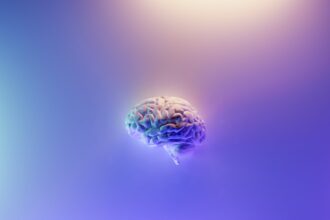You may not realize it, but your perception of the world is a powerful force that shapes your reality. The perception loop is a concept that illustrates how your beliefs influence what you see, hear, and experience, which in turn reinforces those beliefs. This cyclical process can create a feedback loop that either empowers you or limits your potential.
Understanding this loop is crucial for personal growth and transformation. By recognizing how your perceptions are formed and how they affect your life, you can begin to take control of your experiences and reshape your reality. As you navigate through life, you constantly filter information through the lens of your beliefs.
This filtering process can lead to a narrow view of the world, where only information that aligns with your existing beliefs is acknowledged. Consequently, you may miss out on opportunities for growth and understanding. The perception loop is not just a theoretical concept; it is a practical framework that can help you identify and challenge the beliefs that may be holding you back.
By breaking free from this loop, you can open yourself up to new perspectives and experiences that enrich your life.
Key Takeaways
- The Perception Loop is a powerful concept that influences our beliefs and shapes our reality.
- Beliefs have the power to shape our thoughts, emotions, and behaviors, impacting our decision making and overall well-being.
- Cultural and social beliefs play a significant role in shaping our perceptions and influencing our worldview.
- Our personal experiences play a crucial role in shaping our beliefs and can have a profound impact on our behavior and decision making.
- Challenging and changing beliefs is essential for breaking the perception loop and creating positive change in our lives.
Understanding the Power of Beliefs
Beliefs are not merely thoughts; they are deeply ingrained convictions that shape how you interpret the world around you. They can stem from various sources, including upbringing, culture, education, and personal experiences. When you hold a belief, it often feels like an undeniable truth, influencing your actions and reactions in profound ways.
For instance, if you believe that you are not good enough, this belief can manifest in self-doubt and hesitation, preventing you from pursuing opportunities that could lead to success. The power of beliefs lies in their ability to create a self-fulfilling prophecy. When you believe something about yourself or the world, you tend to act in ways that confirm that belief.
If you think that people are generally untrustworthy, you may approach relationships with suspicion, which can lead to misunderstandings and reinforce your belief. Conversely, if you believe in the goodness of others, you are more likely to engage positively with those around you, fostering trust and connection. Recognizing the power of your beliefs is the first step toward understanding how they shape your reality.
The Role of Perception in Shaping Reality

Your perception acts as a filter through which you interpret experiences and interactions. It colors your understanding of events and influences how you respond to them. For example, if you perceive a challenging situation as an opportunity for growth, you are more likely to approach it with enthusiasm and resilience.
On the other hand, if you view the same situation as a threat, fear may paralyze you, preventing any constructive action. This illustrates how perception directly impacts your reality. Moreover, perception is not static; it evolves over time as you gather new experiences and information.
Your brain continuously processes stimuli from the environment, interpreting them based on your existing beliefs and past experiences. This dynamic interplay between perception and belief means that your reality is constantly being shaped and reshaped. By becoming aware of this process, you can begin to question your perceptions and explore alternative viewpoints that may lead to a more expansive understanding of the world.
The Influence of Cultural and Social Beliefs
| Aspect | Metrics |
|---|---|
| Religious Beliefs | Percentage of population affiliated with a religion |
| Gender Roles | Gender wage gap |
| Family Structure | Percentage of single-parent households |
| Traditional Values | Attitudes towards marriage and divorce |
| Language | Number of native speakers |
Cultural and social beliefs play a significant role in shaping your perceptions and experiences. From a young age, you are immersed in a cultural context that provides a framework for understanding the world. These beliefs can dictate everything from social norms to values and expectations.
For instance, if you grow up in a culture that emphasizes individual achievement, you may develop a belief in self-reliance and competition. Conversely, in a collectivist culture, you might prioritize community and collaboration. These cultural influences can create blind spots in your perception.
You may unconsciously adopt beliefs that align with societal expectations without questioning their validity or relevance to your life. This can lead to internal conflict when your personal values clash with those imposed by society. By recognizing the impact of cultural and social beliefs on your perception, you can begin to discern which beliefs resonate with your authentic self and which ones may need reevaluation.
How Our Personal Experiences Shape Our Beliefs
Your personal experiences are powerful teachers that shape your beliefs over time. Each interaction, success, failure, and moment of joy or pain contributes to the tapestry of your understanding of the world. For example, if you’ve had positive experiences with teamwork in school or at work, you may develop a belief in the value of collaboration.
Conversely, negative experiences can lead to skepticism or mistrust in certain situations or people. It’s essential to acknowledge that personal experiences are subjective; two people can have vastly different interpretations of the same event based on their beliefs and backgrounds. This subjectivity means that your beliefs are not absolute truths but rather reflections of your unique journey.
By examining how specific experiences have influenced your beliefs, you can gain insight into why you perceive situations the way you do and how those perceptions might be limiting or empowering.
The Impact of Beliefs on Behavior and Decision Making

Your beliefs significantly influence your behavior and decision-making processes. When faced with choices, the beliefs you hold often serve as guiding principles that dictate your actions. For instance, if you believe that failure is unacceptable, you may avoid taking risks altogether, limiting your opportunities for growth and learning.
Alternatively, if you believe that mistakes are valuable learning experiences, you’re more likely to embrace challenges with an open mind. This impact extends beyond individual choices; it also affects how you interact with others and navigate social situations. Your beliefs about relationships can shape how you communicate and connect with people.
If you believe that vulnerability is a weakness, you may struggle to form deep connections with others. On the other hand, if you view vulnerability as a strength, you’re more likely to foster authentic relationships built on trust and openness. Understanding this connection between beliefs and behavior empowers you to make conscious choices aligned with your values.
Breaking the Perception Loop: Challenging and Changing Beliefs
To break free from the perception loop that confines your understanding of reality, it’s essential to challenge and change limiting beliefs. This process begins with self-awareness; take time to reflect on the beliefs that govern your thoughts and actions. Ask yourself whether these beliefs serve your best interests or hinder your growth.
By identifying beliefs that no longer align with who you want to be or where you want to go, you can begin to dismantle them. Once you’ve identified limiting beliefs, actively seek out evidence that contradicts them. Engage with diverse perspectives through reading, conversations, or new experiences that challenge your existing worldview.
This exposure can help broaden your understanding and create space for new beliefs to emerge. Remember that changing deeply held beliefs takes time; be patient with yourself as you navigate this transformative journey.
The Connection Between Beliefs and Emotional Responses
Your beliefs are intricately linked to your emotional responses. When faced with a situation, the beliefs you hold can trigger specific emotions that influence how you react. For example, if you believe that criticism is a personal attack, receiving feedback may evoke feelings of anger or defensiveness.
Conversely, if you view criticism as an opportunity for growth, it may inspire feelings of curiosity or motivation. Understanding this connection allows you to manage your emotional responses more effectively. By recognizing when a belief is driving an emotional reaction, you can pause and assess whether that belief is serving you well.
This awareness creates space for more constructive emotional responses that align with your goals and values.
The Importance of Self-Reflection in Understanding Beliefs
Self-reflection is a vital tool for understanding your beliefs and their impact on your life. Taking time to introspect allows you to examine the origins of your beliefs and assess their relevance in the present moment. Consider journaling or engaging in mindfulness practices as ways to facilitate this process.
By creating space for reflection, you’re better equipped to identify patterns in your thinking and behavior. During self-reflection, ask yourself probing questions: What do I truly believe about myself? How do these beliefs influence my choices?
Are there beliefs I’ve inherited from others that no longer resonate with me? This practice not only enhances self-awareness but also empowers you to make intentional changes in alignment with your authentic self.
The Role of Cognitive Biases in Perpetuating Beliefs
Cognitive biases are mental shortcuts that can distort our thinking and reinforce existing beliefs. These biases often lead us to favor information that confirms our preconceptions while dismissing evidence that contradicts them—a phenomenon known as confirmation bias. For instance, if you believe that success is solely based on luck, you’re likely to focus on stories of fortunate individuals while ignoring those who achieved success through hard work and perseverance.
Being aware of cognitive biases is crucial for breaking free from limiting beliefs. By recognizing when these biases are at play in your thinking, you can challenge their influence on your perceptions and decisions. This awareness allows for more balanced thinking and opens up possibilities for growth by encouraging exploration beyond familiar narratives.
Practical Strategies for Shifting and Expanding Beliefs
To shift and expand your beliefs effectively, consider implementing practical strategies into your daily life. One approach is to engage in continuous learning—seek out new information through books, podcasts, workshops, or conversations with diverse individuals who challenge your perspectives. This exposure can help broaden your understanding and introduce new ideas that resonate with your evolving self.
Another strategy involves surrounding yourself with supportive communities that encourage growth and exploration. Engaging with like-minded individuals who share similar goals can provide motivation and inspiration as you work toward shifting limiting beliefs. Additionally, practicing gratitude can help reframe negative thought patterns by focusing on positive aspects of life rather than dwelling on limitations.
By recognizing how beliefs shape perceptions—and vice versa—you empower yourself to challenge limiting narratives and embrace new possibilities for growth and fulfillment.
The perception loop is a fascinating concept that delves into how our perceptions influence our thoughts, actions, and ultimately, our reality.
For those interested in exploring this concept further, a related article can be found on the Unplugged Psychology website. This article provides insights into the intricacies of perception and its impact on our mental processes. You can read more about it by visiting the Unplugged Psychology website.
WATCH THIS! The Shocking Truth About Perception Loops
FAQs
What is the perception loop?
The perception loop refers to the continuous cycle of perception, interpretation, and action that occurs in the human brain in response to stimuli from the environment.
How does the perception loop work?
The perception loop begins with the reception of sensory information, such as sight, sound, touch, taste, or smell. This information is then processed and interpreted by the brain, leading to a perception or understanding of the stimuli. Finally, the brain generates a response or action based on this perception, which in turn may lead to new stimuli and restart the perception loop.
What factors can influence the perception loop?
Various factors can influence the perception loop, including individual differences in sensory processing, cognitive biases, cultural influences, and emotional states. Additionally, the context in which stimuli are presented can also impact the perception loop.
Why is the perception loop important?
The perception loop is important because it plays a crucial role in how individuals interact with and make sense of the world around them. It influences decision-making, behavior, and overall cognitive processing.
How does the perception loop relate to psychology and neuroscience?
The perception loop is a fundamental concept in both psychology and neuroscience, as it underlies many aspects of human cognition and behavior. Understanding the perception loop can provide insights into topics such as attention, memory, decision-making, and consciousness.




